There’s More to Math than Drills
By Kate Falk
Posted on 2018-08-20
“As a teacher it frustrates me when drilling is proposed as the remedy to society’s mathematical struggles.” —Patrick Honner, Math Teacher and 2018 NSTA/NCTM STEM Teacher Ambassador
I like practicing. I’m weird that way.
When I was really into guitar, I looked forward to my daily regimen of chromatic scales. I liked playing pentatonic triplets and G major chords up and down the neck, over and over again. Sometimes I’d block off an entire day just to practice. Part of me found satisfaction in the repetition, but I also knew that every note I played was another small step toward mastery. Sore fingertips and cramped hands were what learning felt like.
But there’s a lot more to learning than drilling. I knew it back then, on my way to channeling Mississippi John Hurt, and I know it now as a teacher. This repetitive practice worked as a part of a broader approach. Yes, I needed to drill. But I also needed to experiment, explore, collaborate, theorize, and reflect. Real learning requires all of this, and more.
So as a teacher it frustrates me when drilling is proposed as the remedy to society’s mathematical struggles, a topic discussed in this recent New York Times op-ed. Yes, students should know that 7 x 8 = 56. But they should also know how to think flexibly about numbers, so when they have to multiply 71 and 83, or 7x + 1 and 8x – 4, they won’t panic when they can’t find the answer in their times table.
Students should understand multiplication, not just perform it. They should know how multiplication can sometimes be thought of as repeated addition, and why sometimes it can’t. They should be able to interpret multiplication geometrically, as area or proportion. They should recognize the algebraic structures of multiplication in other mathematical contexts, like functions and transformations.
Facility with numbers and command of basic facts are a good start, but drilling can only take you so far. The note you want isn’t always in the scale you’re working on. To play along, you’ve got to learn how to improvise. To write your own songs, you’ve got to transform those scales into something fresh and exciting. This is what doing math can feel like. And this is what we should want more of for our students. Not more drills.
We know the dangers of pushing excessive practice. Ask anyone who gave up studying an instrument why they quit and the drudgery of drilling is likely to come up. Those who end up not liking math often tell a similar story.
And this emphasis on drilling can be especially harmful when partnered with out-of-touch portrayals of math instruction. Learning for understanding is not at odds with practice and fluency. Fun does not need to come at the expense of the struggle that learning demands. Getting the balance right for every student and every class isn’t easy, but that’s why teaching math is such a complex and exciting challenge.
Perpetuating these false dichotomies can actually reinforce the obstacles we face in learning math and improving education. They convey an inaccurate picture of what math is about. And they undermine the trust between teachers, parents, and students that success requires. Like excessive drilling, this can end up doing more harm than good.
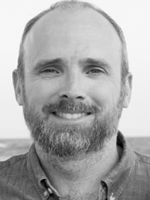
Patrick Honner is a 2018 NSTA/NCTM STEM Teacher Ambassador. He has been teaching mathematics for nearly 20 years and also serves as instructional coach in a department of over 40 teachers. Honner is a frequent writer and speaker on mathematics, teaching, and technology. He writes a column for Quanta Magazine, regularly contributes to the New York Times Learning Network, and maintains a popular blog, MrHonner.com. He is a Presidential Award winner, a four-time Math for America Master Teacher, a New York State Master teacher, a recipient of the Empire State Excellence in Teaching award, a Sloan Award winner, and a Rosenthal Prize honoree.
The mission of NSTA is to promote excellence and innovation in science teaching and learning for all.
Follow NSTA
“As a teacher it frustrates me when drilling is proposed as the remedy to society’s mathematical struggles.” —Patrick Honner, Math Teacher and 2018 NSTA/NCTM STEM Teacher Ambassador
I like practicing. I’m weird that way.
Wonderful Science
By Gabe Kraljevic
Posted on 2018-08-20
 I can see and appreciate how science is really an awesome subject. How can I make science more fun and exciting yet effective for my students?
I can see and appreciate how science is really an awesome subject. How can I make science more fun and exciting yet effective for my students?
—D., Philippines
“It is the supreme art of the teacher to awaken joy in creative expression and knowledge.” – Albert Einstein
I was fortunate to have had several outstanding teachers, in addition to my father, who exuded a sincere passion for science. Watching their demonstrations, listening to them joyously talk about current events (the Moon landings being front and center), I was swept along by their excitement. So, I believe we can’t underestimate the power of being a role model. Be an example of how someone loves science: Be passionate about it and show awe and wonder in the universe around us!
One thing we tend to do as science teachers is to come across as experts. When students ask questions and figure out things for themselves, their learning experiences are richer. It is fine to admit that you don’t know everything but that you are always willing to find the answers. Show them how they, too, can and should be curious and driven to find answers. Providing students with the tools to investigate and make scientific conclusions is much more valuable than filling them with knowledge. Allow students to dive into topics that they are interested in so that they have a vested interest in finding the answers.
I close with another quote from Einstein:
“Learn from yesterday, live for today, hope for tomorrow. The important thing is not to stop questioning.”
Hope this helps!
Photo credit: Ferdinand Schmutzer [Public domain], via Wikimedia Commons
 I can see and appreciate how science is really an awesome subject. How can I make science more fun and exciting yet effective for my students?
I can see and appreciate how science is really an awesome subject. How can I make science more fun and exciting yet effective for my students?
—D., Philippines
“It is the supreme art of the teacher to awaken joy in creative expression and knowledge.” – Albert Einstein
Myths about Science, with an early childhood focus
By Peggy Ashbrook
Posted on 2018-08-17
The National Science Teachers Association website has a section for families titled, “Help Your Child Explore Science.” Here’s my adaptation of the “Myths about Science” page in that section, giving it an early childhood focus.
 Myths about Science, with an early childhood focus
Myths about Science, with an early childhood focus
Myth #1: Science teaching is better left to the teacher.
Your child has been learning from you since the moment he or she was born and began connecting with the world. Parents are children’s first science teachers, providing experiences with textures, smells, tastes, sounds, and sights. Children notice patterns and form beginning understandings of relationships much earlier than they can express them. Recognize that experiences such as bath time or a walk around the building are where science learning can happen in your child’s everyday life and use these opportunities for you and your child to explore and learn together.
Myth #2: Science is difficult.
Because science is a way of seeing the world around us and solving problems, in addition to a body of facts, doing science is for everyone! “Being scientific” is a great family activity. Take a look at previous Early Years blog posts and search for “activity ideas” to find activities that meet the needs of your family.
Myth #3: I’m not a scientist and don’t know enough about science to help my kids.
You do not have to be a scientist to help your children learn science. The majority of parents in this country are not scientists and still help their children learn science. Questions like “What do you notice?” “What’s going to happen?” and “Does it always do that?” are just a few examples of science questions you can explore with your children. A great starting point is to say, “I wonder why…?” followed up with listening to your child and then asking, “Why do you think that?”
Myth #4: I have to know the answers to all of my child’s questions.
It’s okay to say, “I don’t know.” As a parent, you’re probably familiar with the questions “Why?” and “How come?” Children by nature are very inquisitive and interested in the world around them. We wouldn’t be telling the truth if we said we could answer all of their questions. But herein lies the opportunity for them to explore, alone or with you, and have fun simply wondering while you try to discover the answers. Because science is an on-going process, we can expect to learn new information all our lives, some of which will replace older information. I’ve learned to listen when a child tells me, “Actually….” and corrects a statement I held as truth.
Myth #5: Science is all about facts and not very interesting.
 Learning words is empowering so young children delight in being able to tell you when they see a butterfly—a step up from “bug” which was a step up from “Dat!”. Older children feel good when they can tell you they see two kinds of bees on the flowers. Share your own experiences and knowledge after listening to your child, and offer (don’t insist) to help them learn more. (Just like my father used to continue reading the chapter book to himself after us kids fell asleep, I look in identification books and in online resources long after my children lose interest.)
Learning words is empowering so young children delight in being able to tell you when they see a butterfly—a step up from “bug” which was a step up from “Dat!”. Older children feel good when they can tell you they see two kinds of bees on the flowers. Share your own experiences and knowledge after listening to your child, and offer (don’t insist) to help them learn more. (Just like my father used to continue reading the chapter book to himself after us kids fell asleep, I look in identification books and in online resources long after my children lose interest.)
Today’s science education emphasis is on inquiry, which means children are encouraged to explore their own natural curiosities about the world around them. Science museums and centers are great places to visit because they allow children to conduct independent investigations on their own … and children have a lot of fun!
 Myth #6: Science requires equipment.
Myth #6: Science requires equipment.
Science is everywhere so keep an inexpensive magnifier handy for looking at boo-boos, ants, and cracker crumbs! The skills of science can be practiced in any environment, including the kitchen and outdoors in the yard or the park. The best way to begin is through conversation. Parents who ask open-ended questions (ones that don’t have just one “right” answer) and who listen patiently to their children’s responses are modeling the most essential skills for young scientists.
 Myth #7: Science skills should wait for reading skills.
Myth #7: Science skills should wait for reading skills.
To support children’s learning, parents and teachers should join together to foster early science experiences along with opportunities for developing literacy skills. Most preschoolers’ developmental skills are more suited to participating in science explorations than reading and writing. Learning about science also can motivate kids to read and write as they want to know what a photo caption says, or label their drawings.
To recap:
Parents are children’s first science teachers.
Doing science is for everyone!
You do not have to be a scientist (or science educator) to help your children learn science.
It’s okay to say, “I don’t know.”
Share your own experiences and knowledge after listening to your child.
Conversation with an attentive adult is more important than equipment but an inexpensive magnifier is a wonderful tool for young children.
Reading together about science topics that interest children shows the power of the written word. Telling others about a science investigation is a reason to draw and write.
The National Science Teachers Association website has a section for families titled, “Help Your Child Explore Science.” Here’s my adaptation of the “Myths about Science” page in that section, giving it an early childhood focus.
Ed News: California Close To Adoption Of New Curriculum For NGSS
By Kate Falk
Posted on 2018-08-17

This week in education news, LeBron James opens public school in Ohio; Craigslist founder donates $1 million to fund STEM projects on Donors Choose; California close to adoption on new curriculum for NGSS; STEM education has a math anxiety problem; the 2016 National Teacher of the Year won the Democratic primary for an open U.S. House of Representative seat in Connecticut; video-based training program may provide more meaningful virtual professional development for science teachers; and successful professional development program enables educators to create an inclusive environment for all learners.
We Can’t Retool U.S. Schools Based On Finland Or China
Finland has been set as the model for U.S. schools, again because of their comparative scores on international tests, and their unusually happy teachers. And now, China. It’s always tempting to see greener grass on the other side of the ocean, without getting close enough to notice how much manure lies at ground level or how different the weather might be to green up what’s visible. I think that looking longingly at other nations can be deceiving, and for a variety of reasons. Read the article featured in the Atlanta Journal-Constitution.
LeBron James Is Schooling Us On What Education Reform Got Wrong
National headlines offering hope about the state of American education this year have been few and far between. Until last week when LeBron James announced he was opening a school. Ohio has been trying to stomach the four-time NBA MVP’s decision to leave his home state to join the Los Angeles Lakers. But even with his much-mourned departure, James will keep one foot back in Ohio in a big way: supporting a new school model, called the I Promise School, as a joint effort between his family foundation and Akron Public Schools. Read the article featured in EdSurge.
Craigslist Founder Donates $1 Million To Fund STEM Projects On Donors Choose
As STEM teachers across the country prepare to head back to school, a few will get some help this year stocking their classrooms with equipment and materials. Craig Newmark, the founder of the classifieds website Craigslist, has donated $1 million through his philanthropic organization to support STEM projects seeking funding on DonorsChoose.org, a crowdfunding site for schools and educators. Read the article featured in Education Week.
Outgoing New Teacher Center CEO: ‘Teachers Are Not Born, They’re Developed’
After 20 years of leading the New Teacher Center, the nonprofit that’s nationally recognized for its work mentoring incoming educators, Ellen Moir has learned a lot about what it takes to make a teacher successful. Moir shared with Education Week some lessons learned about new teacher development and building effective school systems for all teachers. Read the article featured in Education Week.
California Close To Adoption Of New Curriculum For NGSS
For the first time in 12 years, the state of California is reviewing its K–8 science course materials for adoption of new resources in time for the spring 2019 semester. Many include a digital component, and not every publisher is going to make the cut. The state’s Department of Education adopted the Next Generation Science Standards for grades K–12 in 2013. Now they’re considering course materials that align with the standards. Read the article featured in T.H.E. Journal.
STEM Education Has A Math Anxiety Problem
How is STEM education still missing the mark, especially at the elementary level? Project-based learning and other practices that support educators in integrating across content areas have benefits, but those benefits will mean nothing if our young people do not enter in STEM fields or majors. These skills and experiences are rich and useful when done well, but secondary to the real roadblock that many American students face. We must look deeper than any new program or initiative aimed at simply increasing interest in STEM careers. We must look at a known problem that we often avoid talking about: the math problem. Read the article featured in Education Week.
Jahana Hayes, 2016 National Teacher of Year, Among Educators Who Won Primaries
Jahana Hayes, the 2016 National Teacher of the Year, has won the Democratic primary for an open U.S. House of Representative seat in Connecticut’s 5th District. Hayes, a first-time candidate, handily defeated Mary Glassman, a longtime politician who was backed by Connecticut’s Democratic party, on Tuesday night. Read the article featured in Education Week.
Video-Based Training May Help Teachers Make Science Lessons More Coherent
It’s hard to collaborate and get perspective on science lessons when you are the only teacher in your subject on campus. But a new project is working to use classroom videos to develop more in-depth virtual professional development groups, particularly for rural teachers. Read the article featured in Education Week.
Implementing Equity In Education
North Clackamas School District Superintendent Matthew Utterback minds the gap. That is, the gap between white students and everyone else. That’s why the 2017 National School Superintendent of the Year takes special pride in the details of his Oregon district’s 18 percent graduation rate increase. Read the article featured in District Administration.
By now we’ve all heard how important STEM education is for the jobs of the future. But there are certain jobs that are more people than technology focused, right? Well, maybe not. While traditional selling tactics relied heavily on personal relationships, sales people are now interacting with buyers who have more information at their disposal than ever before. As a result, today’s deals are more often closed over spreadsheets and analytical forecasts than longstanding relationships and rounds of golf. Read the article focused in Fast Company.
Stay tuned for next week’s top education news stories.
The Communication, Legislative & Public Affairs (CLPA) team strives to keep NSTA members, teachers, science education leaders, and the general public informed about NSTA programs, products, and services and key science education issues and legislation. In the association’s role as the national voice for science education, its CLPA team actively promotes NSTA’s positions on science education issues and communicates key NSTA messages to essential audiences.
The mission of NSTA is to promote excellence and innovation in science teaching and learning for all.
Follow NSTA

SciFri Dances, the Moon Mourns the #QueenOfSoul, and a Virtual Reality Check: Twitter Tales for Science Teachers
By Lauren Jonas, NSTA Assistant Executive Director
Posted on 2018-08-17
You can’t believe everything you see in social media, but when something’s popular on Twitter/Facebook/Snapchat, it’s sure to be something you can use to catch students’ attention. The stories that caught our eye this week run the gamut from wonderfully eye-catching to thought-provoking. Warning: SciFri dancing could lead to silly grins all day!
Every Day Should be Science Friday
TGI SCIENCE FRIDAY! We’ve got a packed show for you today!
🐻 in Yosemite
🐜 in traffic jams
🌊 building for future floods
🌳 tangled evolutionary treeTune in at 2pm ET! https://t.co/PnYtEwDsrm pic.twitter.com/ljrvGoB86G
— Science Friday (@scifri) August 17, 2018
RIP #QueenOfSoul: Even the moon is sad.
We’re very sad to hear about the #QueenofSoul passing. Rock Steady Aretha.
From your steady rock out in space. pic.twitter.com/1rbBRlRUW7— NASA Moon (@NASAMoon) August 16, 2018
Share your science teaching successes with us
Celebrating the #firstdayofschool today?! 😊
Check out the #NSTALearningCenter forums for ideas to incorporate #scied into your day! Or share your plans with other @NSTA community members!https://t.co/ZULlTAOCfZ pic.twitter.com/4JsKbpfoMS
— Megan Doty (@Megan_NSTA) August 13, 2018
Have a birthday in August? So do these trailblazers!
Did you know that both Meriwether Lewis and William Clark have August birthdays? Check out this NAEP U.S. history item on the Lewis and Clark Expedition—the first American expedition to cross the western portion of the United States: https://t.co/qXOtEnG7uc pic.twitter.com/BaUN2DC05p
— NAEP (@NAEP_NCES) August 17, 2018
Time for a reality check?
A proposed bill in #Congress calls for studies on the impact of social media, #artificialintelligence, mobile devices, video games, #VirtualReality and #AugmentedReality on children’s development. #edtech #K12 https://t.co/EyYoIX6Yd3 pic.twitter.com/X6amlI6hjD
— Digital Directions (@EdWeekEdTech) August 17, 2018
New plan needed for the red planet?
The National Academies agree: we need a Mars plan https://t.co/bHtkCjZokZ pic.twitter.com/v3C7wmumRU
— Planetary Society (@exploreplanets) August 17, 2018
Datapalooza?
Happy #DataPalooza day! We’re celebrating all things data today with @NOAA and @NOAASatellites. Discover more about our environmental data: https://t.co/8fr4k9xm41 #DataDiscoveryMonth pic.twitter.com/BpG8gfXXuh
— NOAA NCEI Climate (@NOAANCEIclimate) August 17, 2018
The debate I want to solve with my kids this weekend…
A pressing issue settled at last: “Are Frosted Mini-Wheats less frosted than their generic competitors? An investigation” https://t.co/tdfGCYNzaH thanks @washingtonpost pic.twitter.com/A7wsINhegb
— Mike Spear (@mikesgene) August 17, 2018
The mission of NSTA is to promote excellence and innovation in science teaching and learning for all. Follow @NSTA on Twitter to see more stories like these and get the science education resources you need.
You can’t believe everything you see in social media, but when something’s popular on Twitter/Facebook/Snapchat, it’s sure to be something you can use to catch students’ attention. The stories that caught our eye this week run the gamut from wonderfully eye-catching to thought-provoking. Warning: SciFri dancing could lead to silly grins all day!
Ideas and inspiration from NSTA’s August 2018 K-12 journals
By Mary Bigelow
Posted on 2018-08-15
The August issues are ready for back-to-school! Regardless of what grade level or subject you teach, as you skim through the article titles, you may find ideas for lessons that would be interesting your students or the inspiration to adapt/create/share your own.
NSTA members, as always, have access to the articles in all journals! Click on the links to read or add to your library.
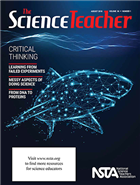 The Science Teacher – Critical Thinking
The Science Teacher – Critical Thinking
Editor’s Corner: It’s Critical: Science teachers are uniquely positioned to affirm the importance of critical thinking. Although teaching it is challenging, it is our moral imperative as educators to help students learn to think and to reason, to evaluate claims using evidence and sound logic.
The lessons described in the articles include a chart showing connections with the NGSS. The graphics are especially helpful in understanding the activities and in providing ideas for your own investigations.
Some teachers may be concerned about investigations and activities because students might not get successful results. The author of Learning From Failed Experiments intentionally allowed student errors and provided guidance in making sense of “mistakes.”
- Data-Driven Inquiry in the PBL Classroom illustrates how students can explore data in maps, graphs, and tables in Biology problem-based learning. The context is a study of marine predators.
- While learning facts and concepts is important, From DNA to Proteins shows how students can combine PBL and argumentation in a comparison of normal and sickle-cell hemoglobin.
- The activities and processes in Making Science Relevant involves connecting science concepts and processes with social issues (e.g., fracking, climate change, gene editing). The article includes a graphic with suggestions for helping students evaluate sources of information.
- Could Your Food Be Contaminated? would be an intriguing and relevant question question for students to explore and investigate how mycotoxins affects crops, animals, and consumers.
- Focus on Physics: Care in the Classroom: This Teacher’s Odyssey is a teachers’ reflection on interacting with students, designing meaningful “exams,” and sharing the joy of learning.
These monthly columns continue to provide background knowledge and classroom ideas:
For more on the content that provides a context for projects and strategies described in this issue, see the SciLinks topics Careers in Earth Science, Climate Change, DNA Structure and Function, Forces and Motion, Food Crops, Fungi, Genetic Engineering, Mutations, Newton’s Laws of Motion, Newton’s Second Law, Sickle Cell Anemia, Transcription, Translation, Volcanoes
Continue to Science Scope and Science and Children…
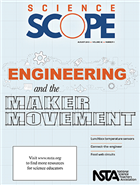 Science Scope – Engineering and the Maker Environment
Science Scope – Engineering and the Maker Environment
From the Editor’s Desk: Reinventing STEM Through the Maker Movement: A maker is a creator who loves to experiment and who isn’t put off by failure. Whether it is wielding a seam ripper for the purpose of resewing an errant seam, tweaking a 3-D–printed design, or rerunning lines of code, a maker attitude is essential. The drive to create propels makers to overcome challenges by exploring, innovating, and problem solving—the same skills that scientists and engineers use—and the same skills we hope to foster within our students.
Articles in this issue that describe lessons (many of which use the 5E model) include a helpful sidebar documenting the big idea, essential pre-knowledge, time, safety issues, and cost. The lessons also include connections with the NGSS.
- The investigations in Inspiring Student-Driven Observations involve students using temperature sensors to monitor small changes in temperature that can affect the overall climate.
- Build a better lumchbox! The Temperature-Sensing Lunchbox incorporates knowledge of thermal energy transfer with sewing and coding experience in a practical project.
- The lesson in Connect-the-Engineer Activity could be an introduction to types of engineering and the design process.
- Spark up your lesson on food webs with the ideas in Illuminating Food Webs. Students integrate concepts in life science with electronic circuits to create illustrated food webs.
- Making in the Middle: Celebrity Statues describes an afterschool activity that integrates life science and engineering as students develop skills in design and programming.
- Looking for a variation on science fairs? Commentary: A Real-World STEM Competition has information on the eCYBERMISSION project, a way of encouraging students to address community problems through the application of science and engineering methods.
- Disequilibrium: Flight and the Bernoulli Effect includes a 5E lesson to incoporate learning about forces and motion with paper airplanes, soda cans, balloons, and straws.
These monthly columns continue to provide background knowledge and classroom ideas:
- Scope on the Skies: Return to Sender (part 2) focuses on asteroids.
- Interdisciplinary Ideas: Creating a Classroom Library has suggestions for managing a library, too.
- Teacher To Teacher: Forming Parent-Teacher Relationships Around Three-Dimensional Learning includes a template for communicating with parents.
- Citizen Science: Be a Zombee Hunter for Science involves students in tracking honeybees and their parasites.
- Science For All: Engineering a Classroom That Works for All suggests classroom management tips for students with learning differences (routines, instructions, organization)
For more on the content that provides a context for projects and strategies described in this issue, see the SciLinks topics Asteroids, Bernoulli’s Principle, Biomes, Changes in Climate, Conservation of Energy, Engineer, Food Webs, Forces of Flight, Honeybees, Insulation, Robots, Telescopes, Temperature and Heat, Thermal Energy, Weather and Climate
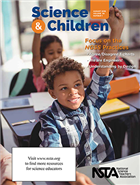
Science & Children – Focus on the NGSS Practices
Editor’s Note: Planting and Practicing: We can learn from each other, whether down the hallway or across the globe. The journal serves as a way to widen our common collaboration pathways both vertically and horizontally.
The lessons described in the articles have a chart showing connections with the NGSS. Many are based on the 5E (or 7E) model and include classroom materials, illustrations of student work, and photographs of students engaged in the activities.
- Guest Editorial: Addressing Common Questions About 21st-Century Science Teaching sets the stage for the theme of this issue. The author includes a chart of NGSS Science and Engineering Practices and what these would look like in a primary classroom. She also addresses questions about inquiry, skills, habits of mind, and the “scientific method.”
- With musical instruments as a context, Waves Sound Great! shows how students can make connections between real-life and science concepts/practices. The activities include hands-on, technology, and investigations.
- T-charts as a way to organize or summarize information have been around for a while. Agree/Disagree T-charts illustrates how this tool can support student argumentation and modeling. (The photos of the second graders’ models are especially interesting.)
- Start with the end in mind is the basis of the Understanding by Design model. This article describes how this process is useful when designing instructional activities to support NGSS standards. The activity in the article focused on investigating the strength of glue in building things.
- As the authors state, children are naturals at building things. Along with their imaginations and creativity, they can say We Are Engineers! In these activities, they are building bridges, towers, catapults, and boats.
- “Children’s use of the [NGSS] practices is based on prior experiences.” The Early Years: Making Sense of Their World includes a lesson on looking for patterns in the movement of the sun.
- In addition to recommending trade books, Teaching Through Trade Books: Important Impacts has lessons on Becoming Gardeners (K-2) and Repurposing Plastics (3-5).
- Teaching Teachers: The Language of Science in the Reading and Writing of Student Scientists illustrates different genres of science writing.
- Engineering Encounters: How Can We Store Water During a Drought? addresses a real-life question as students investigate water use and sustainability.
- Methods and Strategies: Seeds of Practice discusses how to modify a lesson using the 5E model to incorporate Science and Engineering Practices.
These monthly columns continue to provide background knowledge and classroom ideas:
For more on the content that provides a context for projects and strategies described in this issue, see the SciLinks topics Density, Erosion, How Can Matter Be Measured and Compared, Physical Properties of Matter, Plant Growth, Plants with Seeds, Recycling, Sound, Sun, Water Cycle, Watersheds, Writing for Science
The August issues are ready for back-to-school! Regardless of what grade level or subject you teach, as you skim through the article titles, you may find ideas for lessons that would be interesting your students or the inspiration to adapt/create/share your own.
NSTA members, as always, have access to the articles in all journals! Click on the links to read or add to your library.
First-Graders Modeling Day and Night: Making Sense of a Phenomenon
By Cindy Workosky
Posted on 2018-08-14
As a first-grade teacher in Detroit with predominantly Latinx students and English language learners, I worked for several weeks at the end of last school year with a doctoral candidate in science education and former elementary teacher, Christa Haverly, and by extension, an associate professor in science education and expert in scientific modeling, Christina Schwarz (see our bios below). We co-planned a unit around the Space Systems standards for first grade: 1-ESS1-1 and 1-ESS1-2 (see the table at the end).
We started the unit with this phenomenon and driving question:
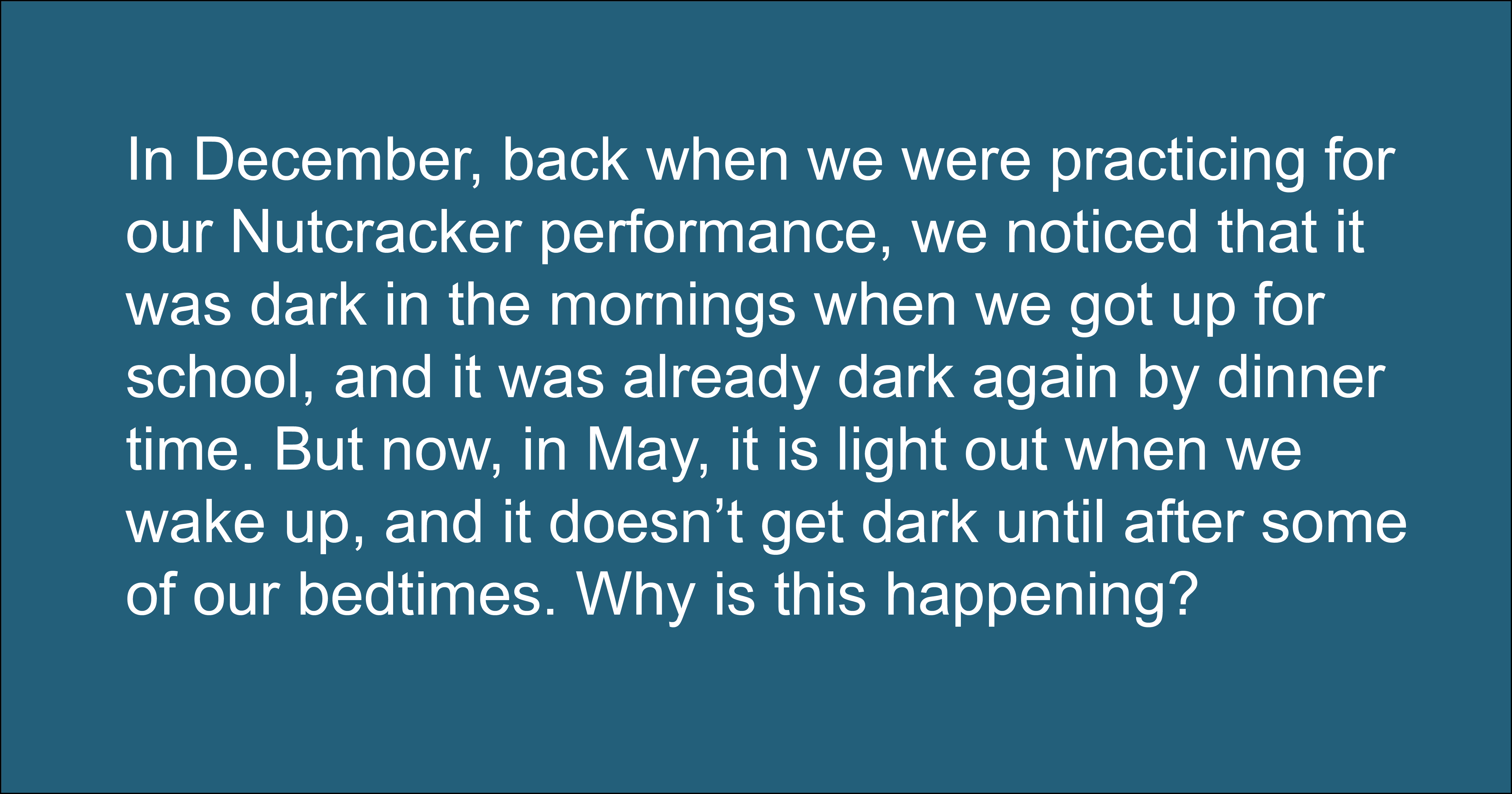
 During the unit, students engaged in many science practices, but we are focusing this blog post on their scientific modeling. In the NGSS, the primary purpose of engaging students in modeling is for them to use models to determine relationships between objects so they can explain phenomena in the natural world. To this end, I had students construct, share, and revise their models of the observed phenomena related to our overarching driving question.
During the unit, students engaged in many science practices, but we are focusing this blog post on their scientific modeling. In the NGSS, the primary purpose of engaging students in modeling is for them to use models to determine relationships between objects so they can explain phenomena in the natural world. To this end, I had students construct, share, and revise their models of the observed phenomena related to our overarching driving question.
We also kept a class model that we continued to update and revise through the unit (pictured is an early version of the model). It seemed useful for my students to have a place to share their ideas and keep track of them during their discussions. In that way, their models were useful for helping them make sense of day and night, a better option than me giving them models of day and night so they could tell me the science facts. I also found that modeling was a useful formative assessment tool, giving me richer insight into student thinking than traditional written assessments.
After a couple of weeks, it became clear that my students were ready to consider an important question about how the day/night cycle happens. We started by reviewing timelines students constructed the week before that plotted daylight and darkness in 24-hour cycles. Students recalled patterns from their data, and we agreed that there is a cycle of light and dark, day and night.
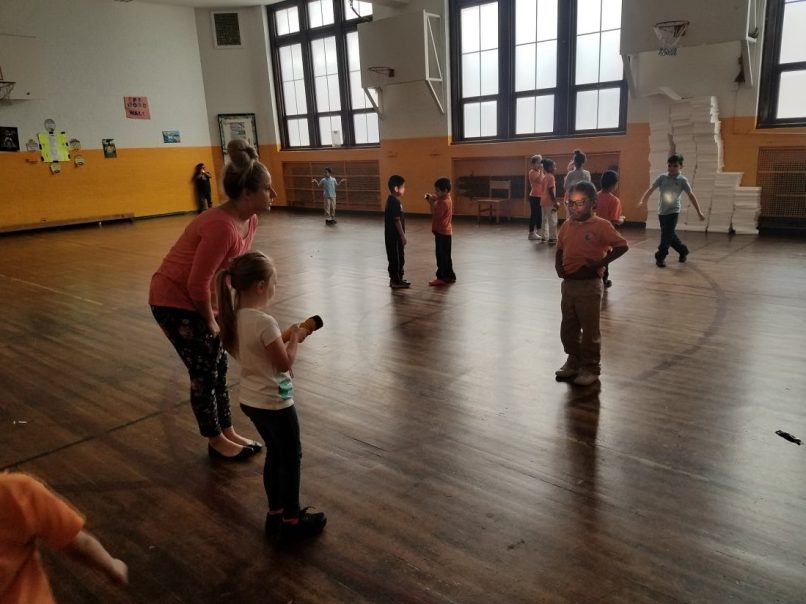 Next, I split students into pairs to role-play Earth and Sun. I gave them a flashlight to represent the Sun, and a sticker to place on one of their foreheads to represent Detroit on Earth. Once in the gymnasium, students took turns being the Sun and the Earth, and explored what kind of movement might create a day/night cycle like we observed in our data. Students’ ideas included the Earth rotating (while the Sun stood still), the Sun moving around the Earth (while the Earth stood still), both co-occurring, and the flashlight turning on and off (both stood still while Sun turned off and on). Many students ultimately tried keeping the Sun still while the Earth spun in place, mimicking the movement of the globe in our classroom.
Next, I split students into pairs to role-play Earth and Sun. I gave them a flashlight to represent the Sun, and a sticker to place on one of their foreheads to represent Detroit on Earth. Once in the gymnasium, students took turns being the Sun and the Earth, and explored what kind of movement might create a day/night cycle like we observed in our data. Students’ ideas included the Earth rotating (while the Sun stood still), the Sun moving around the Earth (while the Earth stood still), both co-occurring, and the flashlight turning on and off (both stood still while Sun turned off and on). Many students ultimately tried keeping the Sun still while the Earth spun in place, mimicking the movement of the globe in our classroom.
Back in class, we debriefed and had students share the different ways they made day and night “happen” in Detroit. Next, we watched a video of the Earth rotating, a phenomenon which can’t be observed from Earth. Students discussed their new ideas with their partners and shared them with the class. They observed the Earth slowly spinning, and they also noticed the area illuminated by the Sun was slowly shifting as the Earth spun. During the discussion, one of my students noticed the classroom globe was also partially lit by the sunlight coming through the windows. He walked over to it, and as he turned the globe, he and his classmates saw new parts of the globe becoming light and dark.
I concluded the activity by asking students to create models showing how day and night happen on Earth. What do you see in these two images? What do they tell you about student thinking?


I think the one on the top shows that the side of the Earth facing the Sun is lit, and the side of the Earth facing away from the Sun is in darkness. The one on the bottom shows that the movement of the Earth rotating in a circle has something to do with the day and night cycle. While several students shared these ideas, others were still including images from their bedrooms, more concretely connecting with our original phenomenon, while still others were showing the Sun moving around the Earth. I used about half of students’ models the following day in a gallery walk, representing a range of ideas, and afterward, students discussed what they observed in one another’s models. Throughout the unit, I continued providing students with new experiences, followed by class discussions about patterns based on new evidence, and students continued creating, sharing, and revising their models.

I loved using the models as a way for students to analyze their ideas about our phenomenon and communicate their ideas to one another and to me in ways that did not rely heavily on writing or vocabulary, and for me to learn about my students’ thinking. What are some ways that you use models in the science classroom? Or what are some of the challenges you’ve experienced? Please comment so we can learn with and from one another!
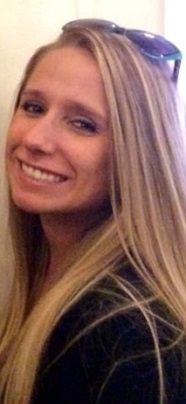
Kim Sedlmeyer graduated from Michigan State University (MSU) in 2011 with a degree in elementary education. Since 2012, she has taught at Escuela Avancemos! Academy, a first-year charter school in Detroit. The Academy is a Success for All school, and Sedlmeyer serves as Reading Roots Chair. Her other passion is dance, and she shares this passion with students every year by directing the school’s Nutcracker program and performances.
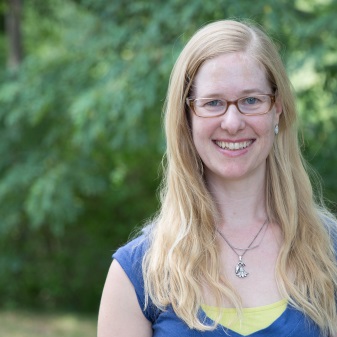 Christa Haverly is a doctoral candidate at MSU studying science teacher education, with an emphasis on urban elementary education. Her research centers on teachers’ pedagogical practices that are responsive to students’ science ideas and are socially just. Before beginning graduate school, she taught elementary school for a decade, working in three different urban elementary schools in Maryland and Illinois.
Christa Haverly is a doctoral candidate at MSU studying science teacher education, with an emphasis on urban elementary education. Her research centers on teachers’ pedagogical practices that are responsive to students’ science ideas and are socially just. Before beginning graduate school, she taught elementary school for a decade, working in three different urban elementary schools in Maryland and Illinois.
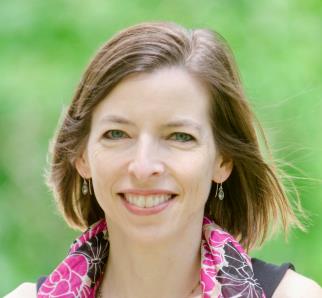 Christina Schwarz is an associate professor of teacher education at MSU. She is a co-editor and author of the NSTA Press book Helping Students Make Sense of the World Using Next Generation Science and Engineering Practices. She has served as subject-area leader in elementary science at MSU for more than a decade and enjoys working in classrooms with teachers and students. She hopes readers will be able to explore and enjoy modeling as much as she does.
Christina Schwarz is an associate professor of teacher education at MSU. She is a co-editor and author of the NSTA Press book Helping Students Make Sense of the World Using Next Generation Science and Engineering Practices. She has served as subject-area leader in elementary science at MSU for more than a decade and enjoys working in classrooms with teachers and students. She hopes readers will be able to explore and enjoy modeling as much as she does.
This article was featured in the August issue of Next Gen Navigator, a monthly e-newsletter from NSTA delivering information, insights, resources, and professional learning opportunities for science educators by science educators on the Next Generation Science Standards and three-dimensional instruction. Click here to sign up to receive the Navigator every month.
Visit NSTA’s NGSS@NSTA Hub for hundreds of vetted classroom resources, professional learning opportunities, publications, ebooks and more; connect with your teacher colleagues on the NGSS listservs (members can sign up here); and join us for discussions around NGSS at an upcoming conference.
The mission of NSTA is to promote excellence and innovation in science teaching and learning for all.
Future NSTA Conferences
2018 Area Conferences
2019 National Conference
Follow NSTA
As a first-grade teacher in Detroit with predominantly Latinx students and English language learners, I worked for several weeks at the end of last school year with a doctoral candidate in science education and former elementary teacher, Christa Haverly, and by extension, an associate professor in science education and expert in scientific modeling, Christina Schwarz (see our bios below). We co-planned a unit around the Space Systems standards for first grade: 1-ESS1-1 and 1-ESS1-2 (see the table at the end).
What Is Your Model For?
Posted on 2018-08-14
Recently, my colleagues and I had an exchange with some teachers in one of our professional development programs. One teacher said, “I think I do a lot of modeling in my class. I have my kids draw pictures of the science ideas they are learning all the time.”
This description of modeling is common. When we ask our colleagues, either informally or in professional development settings, about their current teaching and the practice of developing and using models, they often respond that they consider models as things like 3-D replicas or drawings. They say, “I have my kids make models of cells, the solar system, the water cycle, atoms, and so on.”
This type of “modeling” activity might sound promising, but it often doesn’t fully realize the potential of the modeling practice. It’s not surprising, though, that this conception of modeling is so pervasive because much of the available information on modeling focuses on drawing as a way to bring kids into this practice. In our experience with modeling, we’ve found that a depiction—usually a drawing—focuses our attention on a surface feature of the practice and not on the deeper knowledge-building potential.
For example, teachers might typically ask students to draw a model of the pond ecosystem, or draw a model of the forces acting on a ball as it rolls down a ramp. But without a clear purpose, students might be confused about how they should interpret these tasks and can’t properly judge their ideas, leaving them to appeal to the teacher or textbook as authority. “Is this right?” is what most students will inevitably ask.
In contrast, when a class can work together to examine a phenomenon or class of phenomena and specify questions they want to answer, the aim is clear, and students can decide if the model is effective by asking, “Does this help us answer our questions in ways that makes sense?”
We believe that viewing modeling as a means to an end is a useful way to think about the practice. Models are not the end products or learning targets in themselves, but they allow us to achieve our explanatory goals. Models help us make sense of a phenomenon in a systematic way and explain what is happening. They are used for an explanatory purpose.
Two of us wrote an academic paper about this idea (Gouvea & Passmore 2017). In it, we suggest a few touchpoints for educators as they consider how the modeling practice is positioned in the classroom. We ask:
- Is there a clear phenomenon? Is there some puzzling or unknown aspect of that phenomenon to investigate? Do students understand their role as trying to understand this phenomenon better?
- Is there a clear question? Does the question help clarify what about the phenomenon is puzzling or unknown? Do students understand their role as attempting to answer that question?
- Is there a clear purpose? Are there clear criteria for what constitutes having made progress toward answering the question? Do students understand they are responsible for generating and evaluating that knowledge? (Gouvea & Passmore 2017, p. 58)
We call this the models of versus models for distinction. By using this simple linguistic distinction, we have found it easier to see models as explanatory tools. When planning lessons, we try to avoid saying that “students will develop a model of photosynthesis.” Instead, we say, “Our class will develop a model for where the matter comes from when a seed becomes a tree.” We find this slight shift in language helps us keep the modeling practice connected to an explanatory purpose. Try it out!
The next time you want to incorporate a modeling experience in the classroom, we suggest you ask yourself what the model is for, without using the name of the science idea or a simple label of the thing in your answer. The word “for” should be followed by a phenomenon and matched to a question we have about that phenomenon, something that the science ideas we are developing as a class will help us explain.
Returning to our earlier example of asking students to “draw a model of the pond ecosystem,” which is rather vague, a teacher might instead want to ask students to “develop a model for why there are more mayflies than frogs in the pond.” This revision centers our modeling work on the phenomenon we are trying to explain. We have found that this simple shift in how we talk about (and hopefully, in how we think about) models in the science classroom can help us engage in this practice in more powerful ways.
Please post your comments below and let us know how it this approach is working for you!
Reference: Gouvea, J. & Passmore, C. Sci & Educ (2017) 26: 49. https://doi.org/10.1007/s11191-017-9884-4
As teachers and science educators we are passionate about the modeling practice and its potential to improve student learning in the science classroom. We are part of the team that developed the high school biology curriculum found at modelbasedbiology.com.
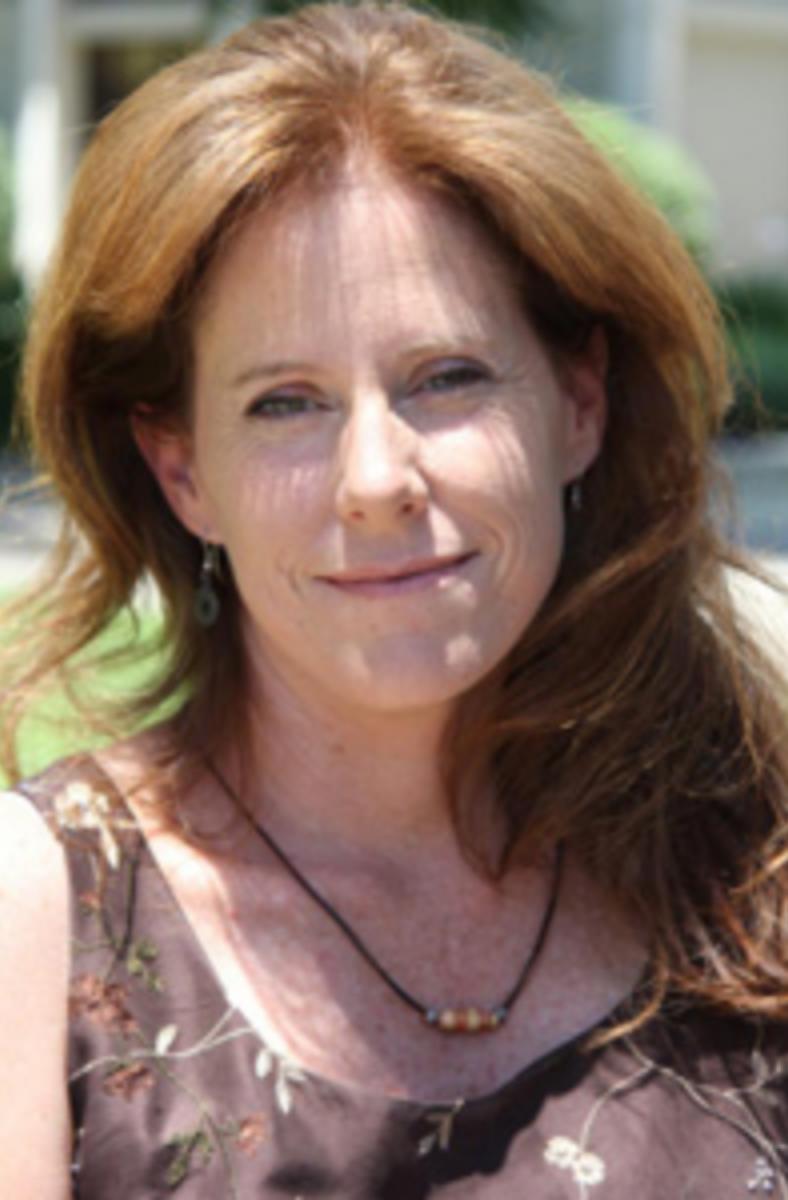 Cynthia Passmore is a professor of science education at the University of California, Davis.
Cynthia Passmore is a professor of science education at the University of California, Davis.
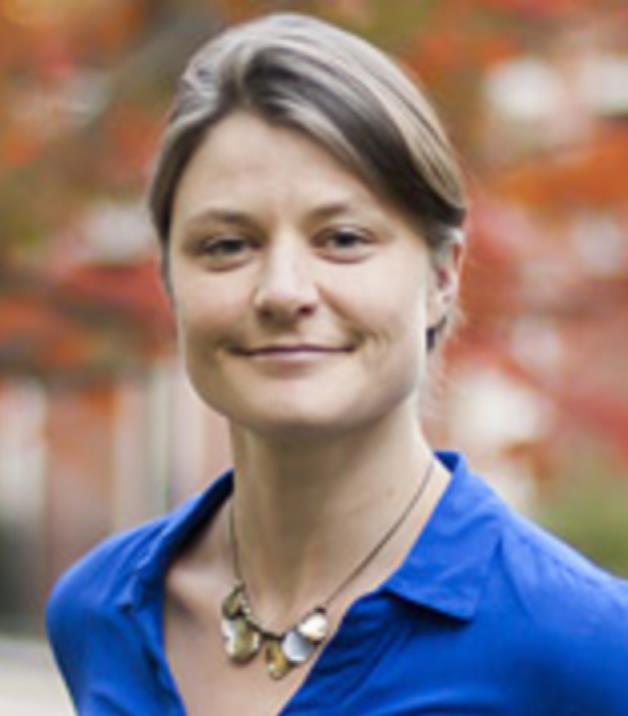 Julia Gouvea is an assistant professor in the Department of Education at Tufts University.
Julia Gouvea is an assistant professor in the Department of Education at Tufts University.
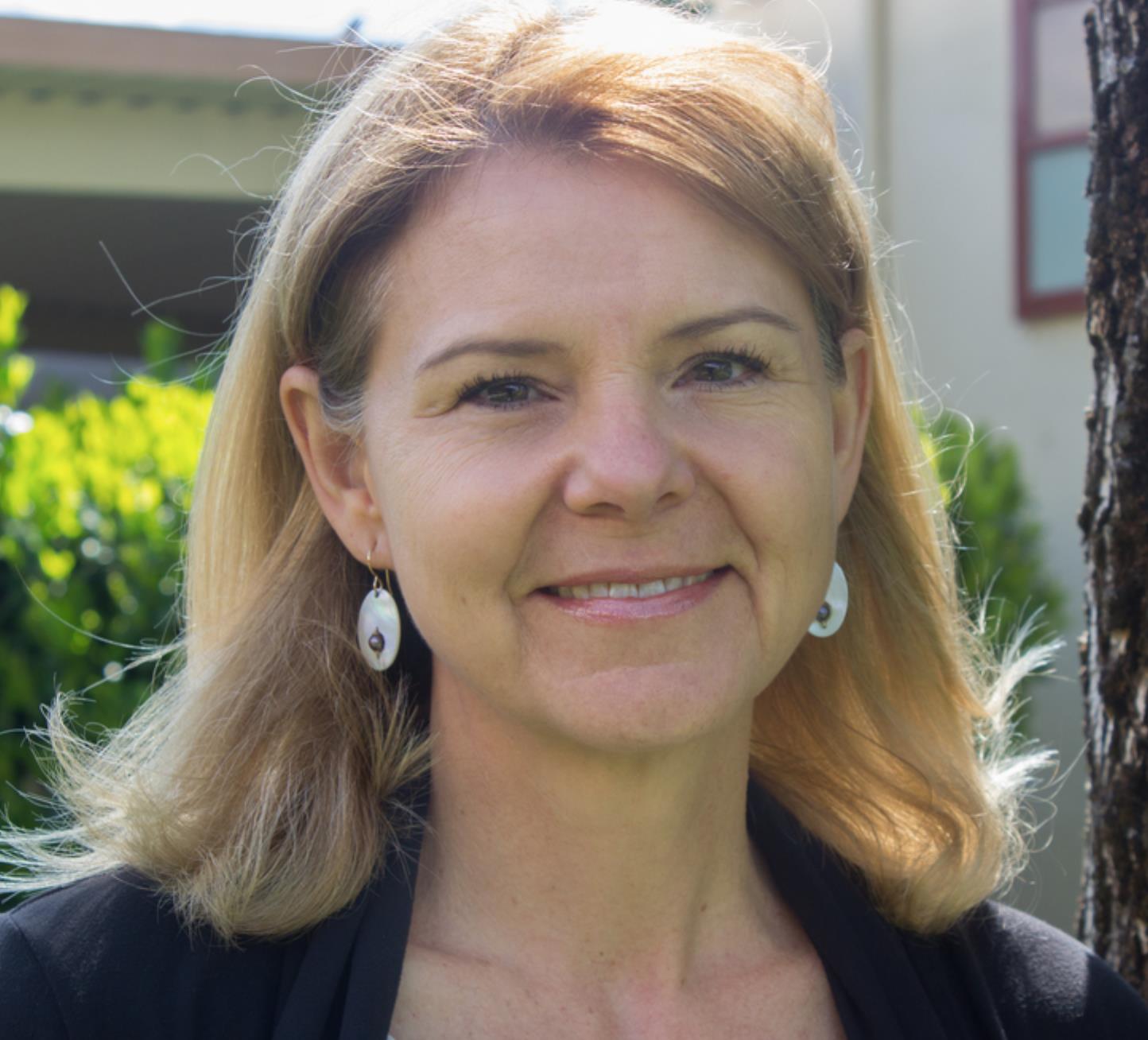 Jennifer Horton is a high school biology teacher and coach in Lincoln, CA.
Jennifer Horton is a high school biology teacher and coach in Lincoln, CA.
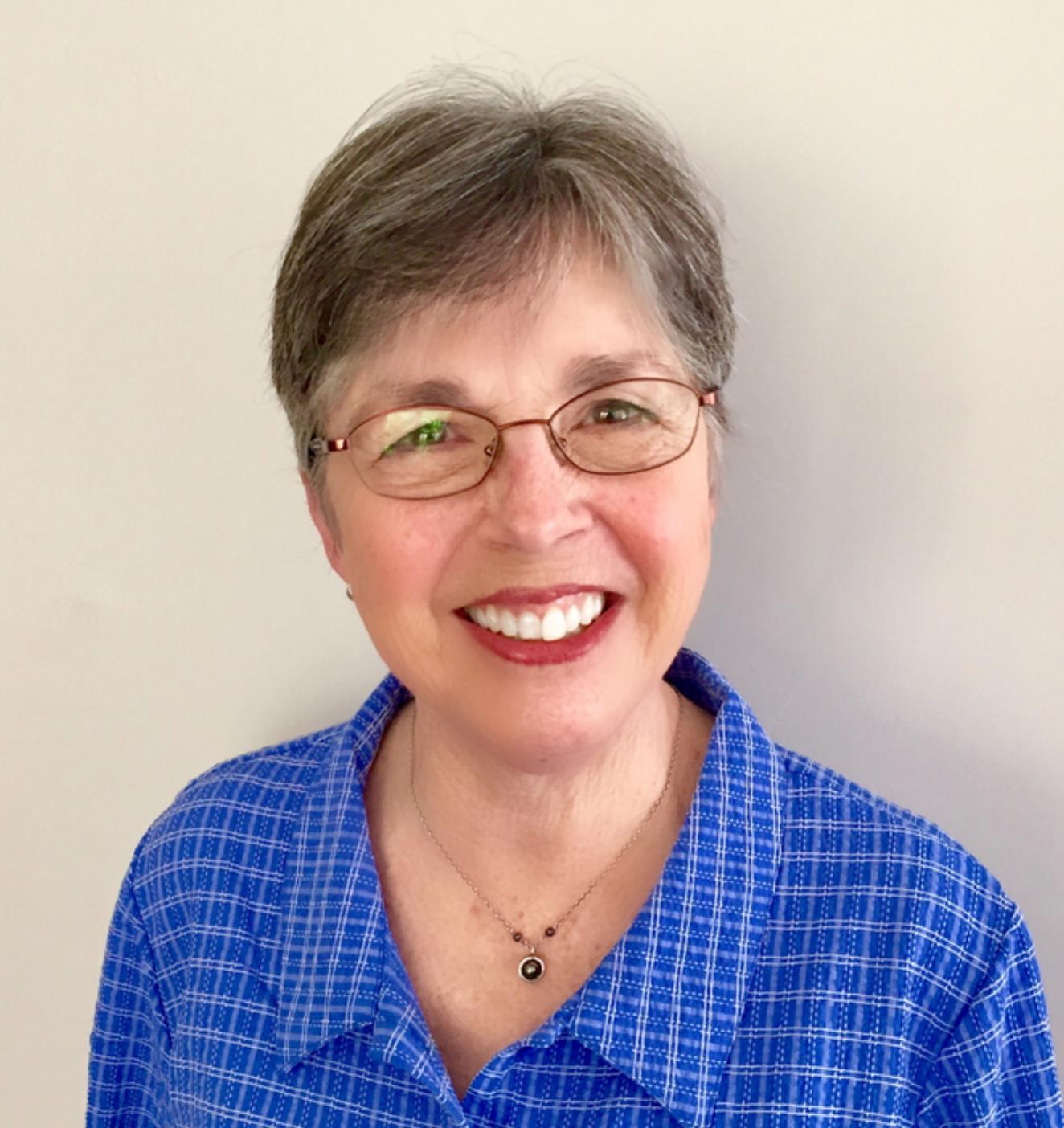 Libbie Coleman is a high school biology teacher in Sacramento, CA.
Libbie Coleman is a high school biology teacher in Sacramento, CA.
Editor’s Note: Download a free sample chapter from the recently published NSTA Press book, Helping Students Make Sense of the World by Engaging in Next Generation Science and Engineering Practice, which explores the modeling ideas in more depth. Purchase the book here. The writers invite readers to check out their high school curriculum project, modelbasedbiology.com (fee required).
This article was featured in the August issue of Next Gen Navigator, a monthly e-newsletter from NSTA delivering information, insights, resources, and professional learning opportunities for science educators by science educators on the Next Generation Science Standards and three-dimensional instruction. Click here to sign up to receive the Navigator every month.
Visit NSTA’s NGSS@NSTA Hub for hundreds of vetted classroom resources, professional learning opportunities, publications, ebooks and more; connect with your teacher colleagues on the NGSS listservs (members can sign up here); and join us for discussions around NGSS at an upcoming conference.
The mission of NSTA is to promote excellence and innovation in science teaching and learning for all.
Future NSTA Conferences
2018 Area Conferences
2019 National Conference
Follow NSTA
Recently, my colleagues and I had an exchange with some teachers in one of our professional development programs. One teacher said, “I think I do a lot of modeling in my class. I have my kids draw pictures of the science ideas they are learning all the time.”
Modeling in Science Instruction
By Cindy Workosky
Posted on 2018-08-14
With the shift toward three-dimensional teaching and learning that the Next Generation Science Standards requires, the Crosscutting Concept of Modeling has become a major focus of my instruction. I use a process that involves revisiting the same model at least three times in a unit to support students’ growth in this area.
Each unit starts with a puzzling phenomenon that can be fully explained by the concepts covered in the unit. Students observe the phenomenon in a video clip or demonstration, then draw a concrete model of what they observed. For more complex, multi-step phenomena, I give them basic drawings of the areas to focus on; they can add details to these drawings.
Once they have a complete drawing, they label and describe what they think is happening and why. These initial models are often basic and full of misconceptions. I find this very informative because I see exactly what they know and understand at the start of the unit.
Students have an opportunity to give and receive feedback using sentence stems on their initial models. Each student is given stickynotes and asked to provide at least one positive and one constructive comment for three different students. Examples of positive sentence stems are “I like how you…” and “When you did _____, I could really understand it.” Some constructive feedback stems are “The part about ____ is a bit unclear” and “You could…” or “Have you thought about including …?”
Over time, the students learned how to use the feedback they gave to others to improve their own models. After the feedback round, students were able to add to their own models before turning them in.
At the halfway point of the unit (about 5–10 days of instruction), students revise their initial models using a writing tool in a different color. They are encouraged to cross out things they now think are incorrect and add new things they’ve learned. They must also add to their written description of what is happening at each step. I encourage them to work with partners/small groups to enhance their current understandings.
At the end of the unit, they are given a blank copy of the model and must repeat the whole process once again. At this point, they should be able to fully explain the phenomenon, clearly showing what they learned from the unit.
With a range of students from Level 1 English language learners to Highly Capable students, differentiation is needed so all students will succeed with modeling. The primary modification I use is providing a word bank for all but the Honors-level classes. This helps students remember to include all of the necessary parts. Directions with descriptions of all the steps help them as well.
I allow students needing the most support to simply label the drawings using arrows and the word bank, rather than writing a paragraph. They are still able to show their understanding of the concepts without getting bogged down in the language.
With the multiple model iterations of the complex guiding phenomena, I am able to assess students’ understanding of the unit and how their understanding changes over time. The mid-unit revisit allows students to be more cognizant of how their own understandings have changed over time.
I also use other models throughout my units. The most common one is smaller phenomena related to the larger one. I often use these as warm-ups, and they all help build understanding of the guiding phenomena. Students will draw what they see and describe what is happening.
For the Electric and Magnetic Fields unit, the guiding phenomenon was a magnetic hourglass. To fully explain why the “sand” behaved the way it did, students needed to incorporate information from the previous units, as well as the current one. Throughout the unit, I played video clips centered around the Performance Expectations of MS-PS2-3 and MS-PS2-5. With these clips, I asked students to make a simple drawing with labels of what they observed, then briefly describe why the materials behaved the way they did.
For the Energy Unit, I taught students how to use Google Sheets to do energy calculations as they entered the data and how to use that data to create graphs modeling the relationships among mass/acceleration/force/energy. They were able to manipulate the data without obsessing about the calculations. This made seeing the relationships easier for them.
The most important part of Modeling for me is to make their use very explicit to the students. Usually students think models are things like 3-D scale models of cars or trains. By showing them that models can be drawings, graphs, or equations, they are able to use modeling as a powerful tool in their own inquiry.
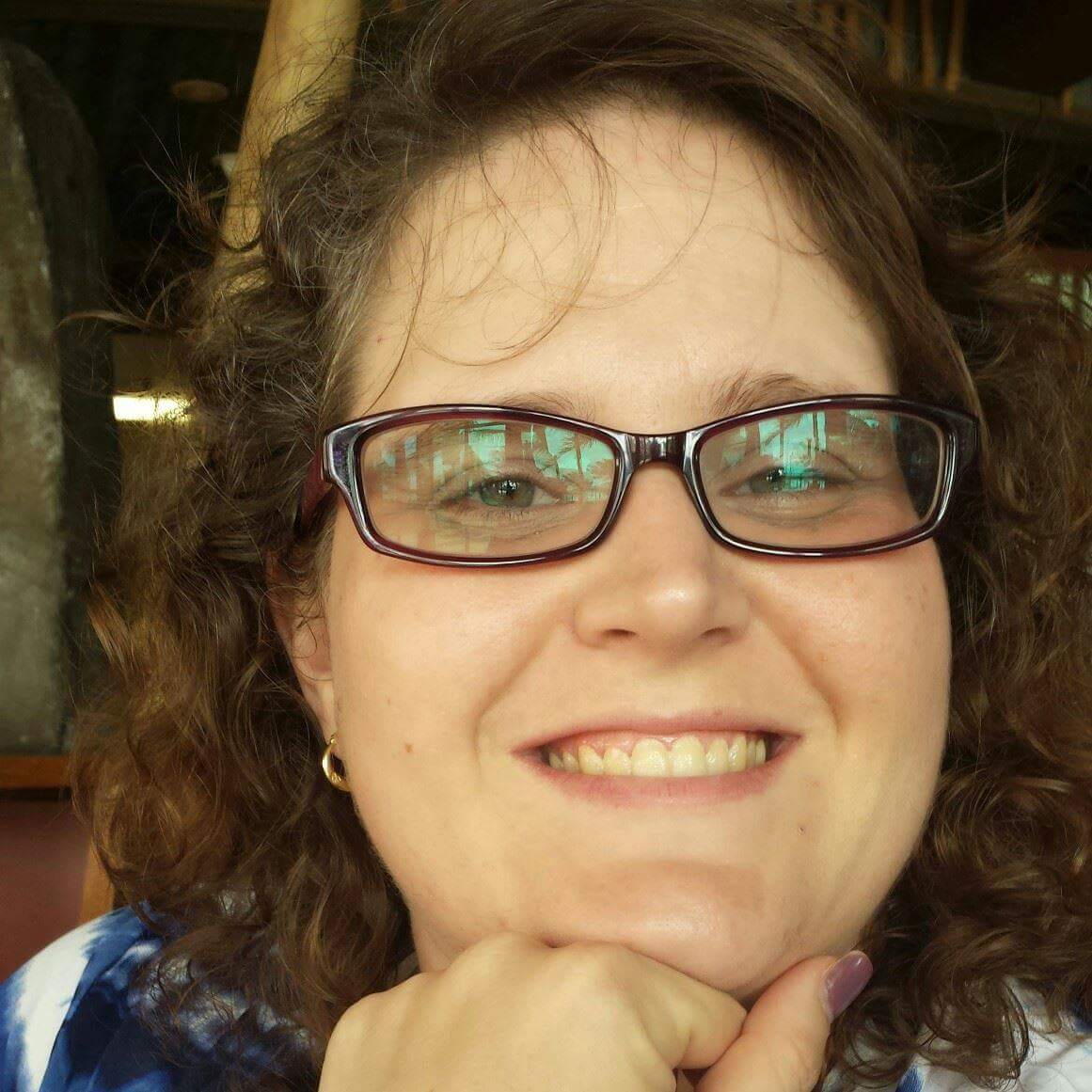 Erinn Olson is a middle school science teacher in the Peninsula School District in Gig Harbor, Washington. She previously taught middle school math and science at Mountain View Middle School in Bremerton, Washington, where her activities included teaching Project Lead the Way, working on the regional science and math leadership teams for 10 years, and serving as the school lead for Common Core Math and implementation lead for the NGSS. She also serves as a leader for the Boy Scouts of America at Cub, Troop, and District Levels. Olson grew up in Salem, Oregon, and holds a Bachelor of Science degree in behavioral science and a Masters of Arts degree in education from Oregon State University.
Erinn Olson is a middle school science teacher in the Peninsula School District in Gig Harbor, Washington. She previously taught middle school math and science at Mountain View Middle School in Bremerton, Washington, where her activities included teaching Project Lead the Way, working on the regional science and math leadership teams for 10 years, and serving as the school lead for Common Core Math and implementation lead for the NGSS. She also serves as a leader for the Boy Scouts of America at Cub, Troop, and District Levels. Olson grew up in Salem, Oregon, and holds a Bachelor of Science degree in behavioral science and a Masters of Arts degree in education from Oregon State University.
This article was featured in the August issue of Next Gen Navigator, a monthly e-newsletter from NSTA delivering information, insights, resources, and professional learning opportunities for science educators by science educators on the Next Generation Science Standards and three-dimensional instruction. Click here to sign up to receive the Navigator every month.
Visit NSTA’s NGSS@NSTA Hub for hundreds of vetted classroom resources, professional learning opportunities, publications, ebooks and more; connect with your teacher colleagues on the NGSS listservs (members can sign up here); and join us for discussions around NGSS at an upcoming conference.
The mission of NSTA is to promote excellence and innovation in science teaching and learning for all.
Future NSTA Conferences
2018 Area Conferences
2019 National Conference
Follow NSTA
With the shift toward three-dimensional teaching and learning that the Next Generation Science Standards requires, the Crosscutting Concept of Modeling has become a major focus of my instruction. I use a process that involves revisiting the same model at least three times in a unit to support students’ growth in this area.
Ed News: New Girl Scout STEM Badges & Back-to-School Spending Hits $82 Billion
By Kate Falk
Posted on 2018-08-13

This week in education news, the Girl Scouts have added 30 new badges in STEM to encourage more female involvement; back-to-school spending will hit $82.8 billion for K-12 and college combined, and more teachers are digging into their wallets; and meet astrophysicist – and NSTA President-elect—Dennis Schatz.
Girl Scouts Launch New STEM Badges
The Girl Scouts have added 30 new badges in science, technology and engineering to encourage more female involvement in STEM. Girl Scouts CEO Sylvia Acevedo joins the ‘Power Lunch’ team to discuss how the non-traditional activities will help girls adapt to a changing world. Read the article featured on CNBC.com.
Teachers Must Budget For Hundreds Of Dollars In School Supplies
Kids love it, parents may dread it, but one thing’s certain: The annual school shopping ritual is a smack to the wallet every year. This year, back-to-school spending will hit $82.8 billion for K-12 and college combined, according to the National Retail Federation’s annual survey. That’s almost as high as last year’s $83.6 billion. Read the article featured on CNBC.com.
Working Geek: A Star In Science Ed, Astrophysicist Dennis Schatz Wants To Expand Minds
Schatz is a solar astrophysicist by training, has written 25 science books for kids and last year Asteroid 25232 was renamed Asteroid Schatz by the International Astronomical Union’s Minor Planet Center in honor of his dedication to science education. He’s worked for the Science Center for four decades. Read the article featured on GeekWire.com.
1st Of Christa McAuliffe’s Lost Lessons Released From Space
The first of Christa McAuliffe’s lost lessons finally was released from space Tuesday, 32 years after she died aboard Challenger. Read the article featured in Education Week.
8 Apps You Should Check Out Before School Starts
Check out this list of apps, ranging from kindergarten through high school and touching on topics such as STEM, history, and vocabulary. Read the article featured in eSchool News.
Stay tuned for next week’s top education news stories.
The Communication, Legislative & Public Affairs (CLPA) team strives to keep NSTA members, teachers, science education leaders, and the general public informed about NSTA programs, products, and services and key science education issues and legislation. In the association’s role as the national voice for science education, its CLPA team actively promotes NSTA’s positions on science education issues and communicates key NSTA messages to essential audiences.
The mission of NSTA is to promote excellence and innovation in science teaching and learning for all.
Follow NSTA

This week in education news, the Girl Scouts have added 30 new badges in STEM to encourage more female involvement; back-to-school spending will hit $82.8 billion for K-12 and college combined, and more teachers are digging into their wallets; and meet astrophysicist – and NSTA President-elect—Dennis Schatz.


